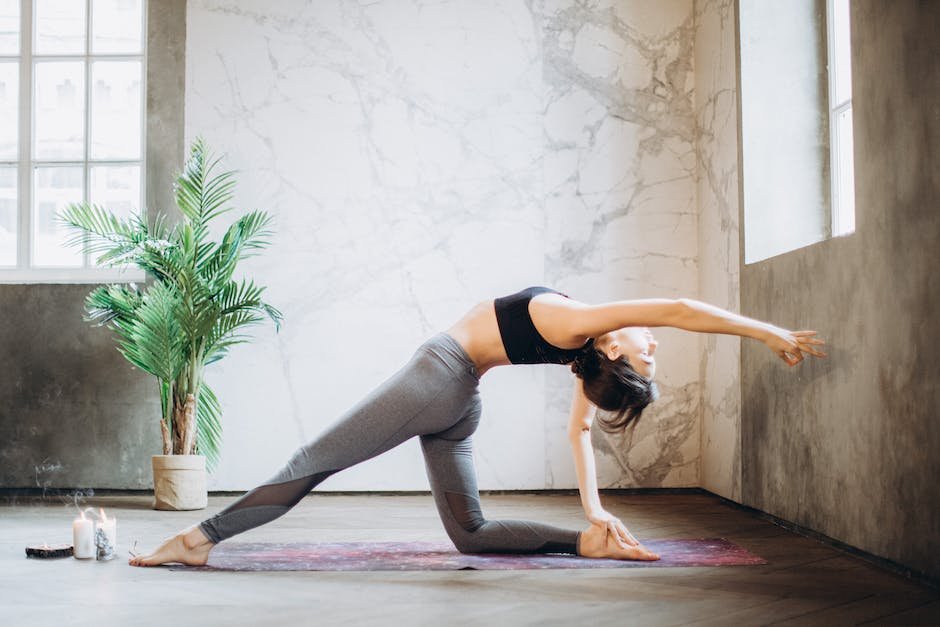In the realm of physical well-being, the intricate dance between our bodies and the risks of injury is an everlasting performance. As we strive to stay active and push our boundaries, it becomes crucial to explore every avenue that leads to injury prevention. Today, we delve into an enlightening subject that appears to hold the key to both enhanced performance and safeguarding our bodies from harm: flexibility. In this article, we unravel the mesmerizing connection between flexibility and injury prevention, shedding light on the secrets that lie within the art of bending and stretching.
Table of Contents
- The Science Behind Flexibility and Injury Prevention
- Understanding the Relationship Between Flexibility and Injury Risk
- Effective Strategies for Enhancing Flexibility and Preventing Injuries
- Targeting Key Muscle Groups: Flexibility Exercises for Injury Prevention
- Developing a Well-rounded Flexibility Routine
- Q&A
- Wrapping Up

The Science Behind Flexibility and Injury Prevention
Flexibility plays a crucial role in injury prevention and overall physical well-being. Understanding the science behind flexibility can help us maximize its benefits and minimize the risk of injuries. Here are some key insights into how flexibility impacts our bodies:
1. Joint Range of Motion: Flexibility directly affects the range of motion in our joints, allowing for fluid and unrestricted movement. Regular stretching exercises can enhance the elasticity of muscles and tendons, enabling us to perform daily activities with ease.
2. Improved Blood Circulation: Engaging in flexibility exercises increases blood flow to the muscles, improving their oxygen and nutrient supply. This enhanced circulation aids in muscle recovery, reducing the likelihood of strains and tears during physical activities.
3. Muscle Activation and Strength: Maintaining flexible muscles enables them to activate more effectively during workouts or sports activities. It allows for better muscle engagement and ultimately enhances performance. Well-stretched muscles also have a decreased risk of becoming overly tight and prone to injury.
4. Balance and Posture: Flexibility training contributes to better balance and overall posture. By stretching and strengthening the muscles surrounding our core and spine, we can maintain a more upright and aligned posture, reducing the strain on our joints and decreasing the risk of falls or repetitive strain injuries.
By incorporating a regular flexibility routine into our fitness regimen, we can improve our overall health and reduce the likelihood of injuries. Remember to consult with a professional instructor or physical therapist to ensure proper technique and form during stretching exercises. Stay committed, and enjoy the long-term benefits of a flexible and injury-resistant body!
Understanding the Relationship Between Flexibility and Injury Risk
The relationship between flexibility and injury risk is a complex one that often leaves people puzzled. While many assume that being flexible automatically protects against injuries, the reality is not as straightforward. Flexibility is an essential component of overall physical fitness, but it should be complemented with other factors to effectively prevent injuries.
1. Balanced Muscle Strength: Flexibility alone cannot guarantee injury prevention. It is equally important to have balanced muscle strength throughout the body. When certain muscles are excessively flexible, while others remain weak, the risk of injury increases. Achieving a balance by combining flexibility exercises with strength training helps distribute the load evenly, reducing the chances of overstretching vulnerable muscles or joints.
2. Body Awareness: Another crucial aspect is body awareness. Flexibility should be accompanied by proper motor control and proprioception – the ability to sense one’s own body position in space. This awareness allows individuals to move with control and precision, minimizing the likelihood of injury. Practicing techniques such as yoga or Pilates can enhance body awareness while improving flexibility simultaneously.
3. Gradual Progression: Flexibility training should be approached with patience and gradual progression. While aiming for increased flexibility, it is essential to avoid pushing beyond one’s limits too quickly. Overstretching tissues without proper adaptation can lead to strain or tears. Instead, gradually increase the intensity and duration of stretching exercises over time, allowing the body to adapt and become more flexible in a safe and sustainable manner.
By understanding the intricate relationship between flexibility and injury risk, individuals can develop comprehensive training routines that address multiple factors simultaneously. Combining flexibility exercises with strength training, body awareness, and a gradual progression approach is the key to optimizing physical performance while minimizing the likelihood of injury.
Effective Strategies for Enhancing Flexibility and Preventing Injuries
When it comes to achieving optimal performance in any physical activity, flexibility plays a crucial role. Not only does it help to prevent injuries, but it also allows for a wider range of motion, improving overall movement and performance. Here are some effective strategies that can enhance flexibility and reduce the risk of injuries:
- Warm-up Exercises: Prior to engaging in any physical activity, it is essential to warm up the muscles and joints. This can be achieved through dynamic stretches, such as arm circles and leg swings, which help to increase blood flow and prepare the body for movement.
- Regular Stretching Routine: Incorporating a regular stretching routine into your fitness regimen can greatly enhance flexibility. Static stretches, such as hamstring and quadriceps stretches, should be performed after exercise when the muscles are warm. Aim to hold each stretch for 20-30 seconds to allow the muscles to elongate.
- Vary the Stretching Techniques: Aside from traditional static stretches, it is beneficial to explore other stretching techniques to improve flexibility. These may include dynamic stretching, where stretches are performed in a controlled, fluid motion, or proprioceptive neuromuscular facilitation (PNF) stretching, which involves contracting and relaxing targeted muscles during a stretch.
- Balance and Stability Training: Incorporating exercises that focus on balance and stability can help improve flexibility. Activities such as yoga and Pilates are great options to strengthen the core muscles and improve overall body control, leading to enhanced flexibility.
By implementing these effective strategies into your fitness routine, you can enhance flexibility, reduce the risk of injuries, and take your performance to new heights. Embrace the power of flexibility, and your body will thank you!
Targeting Key Muscle Groups: Flexibility Exercises for Injury Prevention
Flexibility plays a crucial role in preventing injuries and enhancing overall athletic performance. By targeting key muscle groups, you can improve your range of motion, reduce muscle tightness, and minimize the risk of strains and sprains. Incorporating a regular routine of flexibility exercises into your fitness regimen is essential for maintaining optimal physical health. In this section, we will explore a variety of exercises that specifically target different muscle groups for injury prevention.
Hamstrings
The hamstrings, located on the back of the thigh, are prone to tightness and injuries, especially for individuals involved in activities that require explosive leg movements. Here are a few exercises to improve hamstring flexibility:
- Standing Forward Bend: Stand with your feet hip-width apart and slowly bend forward from the hips, reaching toward the floor. Keep your knees slightly bent and hold the stretch for 20-30 seconds.
- Seated Forward Bend: Sit on the floor with your legs extended in front of you. Slowly reach forward, aiming to touch your toes. Hold the stretch for 20-30 seconds.
- Hamstring Foam Rolling: Utilize a foam roller to apply gentle pressure along the length of your hamstrings, rolling from your glutes to just above the knee. Repeat for 1-2 minutes on each leg.
Hips
Flexible hips are crucial for maintaining proper form and preventing lower back pain. Here are a few exercises to enhance hip flexibility:
- Butterfly Stretch: Sit on the floor, bend your knees, and bring the soles of your feet together. Gently press your knees toward the floor and hold the stretch for 20-30 seconds.
- Hip Flexor Stretch: Kneel on one knee, while the other leg is extended forward. Slightly lean your body weight forward, feeling the stretch in the front of your hip. Hold for 20-30 seconds and repeat on the other side.
- Pigeon Pose: Begin in a plank position and bring your right knee forward, placing it behind your right wrist. Slide your left leg back, straightening it behind you. Lower your upper body towards the ground and hold the pose for 30 seconds. Repeat on the other side.
Remember to always warm up before attempting any flexibility exercises and avoid pushing yourself too far. As with any fitness routine, it is essential to listen to your body and consult with a healthcare professional if you have any concerns or existing injuries.
Developing a Well-rounded Flexibility Routine
Creating a comprehensive flexibility routine is essential for achieving a well-rounded and balanced fitness regimen. Incorporating various types of stretches and exercises into your routine can help improve your flexibility, enhance range of motion, and prevent injuries. Here are some key elements to consider when :
1. Dynamic Stretches: Start your routine with dynamic stretches to warm up your muscles and prepare them for movement. These stretches involve actively moving your body through a full range of motion, such as arm circles, leg swings, or trunk rotations. Dynamic stretching not only increases your body temperature but also stimulates blood flow, helping to prevent muscle strains and enhance flexibility.
2. Static Stretches: After the dynamic warm-up, incorporate static stretches into your routine. These stretches involve holding a specific position for a longer duration to target and lengthen specific muscle groups. Using deep breathing techniques during static stretches can help relax the muscles and deepen the stretch. Focus on areas that tend to be tight or prone to stiffness, such as the hamstrings, calves, hip flexors, and shoulders.
3. Yoga or Pilates: Including yoga or Pilates exercises in your flexibility routine can offer numerous benefits. These practices incorporate both dynamic and static stretches, emphasizing proper alignment, balance, and core strength. The flowing movements and controlled poses not only improve flexibility but also promote relaxation and mental well-being.
4. Foam Rolling: While not technically a stretch, foam rolling is a valuable addition to any flexibility routine. Using a foam roller, you can perform self-myofascial release, which helps release knots and tension in the muscles and connective tissues. It can help improve flexibility, reduce muscle soreness, and enhance recovery after workouts.
Remember, flexibility training should be performed at least three times a week, gradually increasing the intensity and duration of the stretches over time. By that includes dynamic stretches, static stretches, yoga or Pilates, and foam rolling, you can enhance your overall flexibility, prevent injuries, and optimize your performance in various physical activities.
Q&A
Can flexibility actually help prevent injuries?
Yes, flexibility plays a crucial role in injury prevention. It allows for a greater range of motion, reduces muscle tension, and improves body alignment, all of which help decrease the risk of injuries during physical activities.
How does flexibility reduce the risk of injuries?
When muscles and joints are more flexible, they are better able to absorb the impact and stress placed on them. This helps to prevent strains, sprains, and other injuries that may occur from overexertion or sudden movements.
What are some specific injuries that can be prevented with flexibility training?
Flexibility training can help prevent a wide range of injuries, including muscle strains, joint sprains, tendinitis, and even stress fractures. By improving flexibility in specific muscle groups, the risk of overstretching or tearing these tissues is significantly reduced.
Is it necessary to be extremely flexible to prevent injuries?
No, extreme flexibility is not necessary to prevent injuries. While being more flexible does provide additional benefits, even modest improvements in flexibility can have a significant impact on injury prevention.
Can being too flexible increase the risk of injuries?
Yes, being excessively flexible without adequate strength can increase the risk of injuries. It is crucial to achieve a balance between flexibility and muscle strength to provide stability and support to the joints, reducing the risk of hyperextension or dislocation.
Is there an ideal flexibility routine for injury prevention?
The ideal flexibility routine for injury prevention may vary from person to person, but generally, a combination of static and dynamic stretching exercises is recommended. It is important to focus on stretching all major muscle groups, paying attention to areas prone to tightness or previous injuries.
What are some other factors besides flexibility that contribute to injury prevention?
Alongside flexibility, maintaining proper form and technique, gradually increasing intensity and duration of exercise, and incorporating strength training are important for injury prevention. Additionally, adequate rest and recovery periods, as well as listening to your body’s signals, are vital in preventing overuse injuries.
Wrapping Up
As we wrap up this exploration into the profound relationship between flexibility and injury prevention, it becomes evident that the proverbial bridge connecting these two forces is one worth traversing. From the graceful stretches of a ballet dancer to the limber movements of a yogi, the art of bending, reaching, and contorting our bodies holds within it a captivating power that not only promotes injury avoidance but enhances our overall wellbeing.
Imagine, for a moment, a world where rigidity replaced the fluidity of our movements. Picture athletes pushed to the brink of their physical limits without the ability to stretch, twist, or flex. Surely, chaos would ensue as our bodies rebelled against the strain, succumbing to the demands of our rigid existence. Yet, thanks to the intricate marvel of human physiology, we possess the remarkable capacity to address these challenges head-on through the cultivation of flexibility.
Delving deeper into the science, we discovered that flexibility is like a guardian angel, watching over our bodies with an unwavering dedication. It bolsters our ligaments and tendons, allowing them to adapt effortlessly to sudden movements and unexpected stresses. When we embrace flexibility, we gift our muscles the ability to recover swiftly, attenuating the threat of injury that may lurk just around the corner. It becomes a symbiotic relationship, where flexibility nurtures resilience and resilience rewards us with a sense of boundless freedom.
However, just as balance is crucial on the tightrope of life, flexibility alone cannot usher in the era of injury-free existence. It must partner harmoniously with a holistic approach to fitness, including strength training, proper form, and diligent rest and recovery. Only then can we truly unlock the full potential of our bodies, harnessing the power of flexibility to its utmost capacity.
As the curtain falls on our exploration, let us remember that flexibility is not merely a physical attribute, but a mindset. It embodies adaptability, humility, and the willingness to embrace change. By cultivating flexibility within our bodies and minds, we embark upon a transformative journey, where injuries are minimized, and possibilities become limitless.
So, let us continue, arm in arm with the wondrous power of flexibility, to dance, to stretch, to bend, and to reach towards our highest potential. For, in doing so, we craft a future where the harmony of our bodies and the grace of injury prevention merge seamlessly, guiding our path to a life of vitality, strength, and limitless flexibility.
As an affiliate, my content may feature links to products I personally use and recommend. By taking action, like subscribing or making a purchase, you’ll be supporting my work and fueling my taco cravings at the same time. Win-win, right?
Want to read more? Check out our Affiliate Disclosure page.




